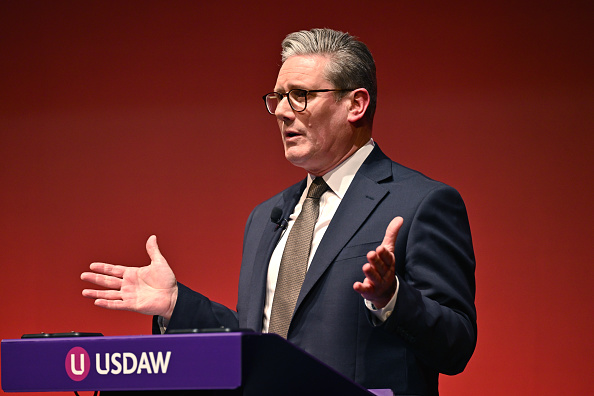Keir Starmer unveils his 5 golden rules for building on the ‘grey belt’
Labour has pledged to alleviate the UK's housing crisis if it is elected

Labour has outlined plans to make building houses easier by encouraging the building on the ‘grey belt’.
The party says it will not build on genuine nature spots and will set tough conditions for releasing green belt land for house building so that building a house and protecting nature go hand-in-hand.
A statement from leader Keir Starmer says Labour is committed to prioritising building on brownfield land first, but “we can’t build the homes that Britain needs without also releasing some greenbelt, including poor-quality land, car parks and wastelands currently classed as green belt”.
What is the ‘grey belt’?
The term ‘grey belt’ refers to neglected areas such as poor-quality wastelands and disused car parks that are in the greenbelt.
These are places that Labour says can host homes while improving and protecting genuine nature spots.
A statement on Labour’s website reads: “Labour is not alone in recognising this distinction: the Chair of Natural England has called for green belt release to support the housing crisis, noting there is no inherent trade-off between building homes and protecting nature.”
Starmer’s 5 golden rules for building on ‘grey belt’
Labour has laid out five guiding principles to ensure that the new affordable homes are built in a way that protects natural green spaces. They are:
Get the Homebuilding & Renovating Newsletter
Bring your dream home to life with expert advice, how to guides and design inspiration. Sign up for our newsletter and get two free tickets to a Homebuilding & Renovating Show near you.
1. Brownfield first: Within the green belt, any brownfield site must be prioritised for development.
2. Grey belt second: Starmer reiterated his plans to develop green belt land claiming poor-quality and ugly areas of the Green Belt should be prioritised over nature-rich, environmentally valuable land in the green belt. Labour says that at present, beyond the existing brownfield category, the system doesn’t differentiate between them. This category will be distinct to brownfield with a wider definition.
3. Affordable homes: Plans must target at least 50% affordable housing delivery when land is released.
4. Boost public services and infrastructure: Plans must include Levelling Up proposals such as boosting public services and local infrastructure, like more school and nursery places, new health centres and GP appointments.
5. Improve genuine green spaces: Labour rules out building on genuine nature spots and requires plans to include improvements to existing green spaces, making them accessible to the public, with new woodland, parks and playing fields. Plans should meet high environmental standards.
Should we build on the ‘grey belt’?
Countryside charity, CPRE, cautiously welcomed Labour’s announcement.
It said: “Our research has shown that there are enough ‘shovel-ready’ brownfield sites in the UK for 1.2 million new homes, which will make a significant contribution to Labour’s goal of 1.5 million homes.”
The CPRE added that Labour’s focus on affordable housing is “positive”.
However, it sounded a note of caution over the issue of whether we should build on the grey belt.
“Labour’s proposal to designate a new category of ‘grey belt’ causes some concern, specifically, the inclusion of ‘ugly wastelands’ into this category,” it added.
“If done badly, Labour’s policy could lead to more speculative development by encouraging landowners to deteriorate undeveloped land. While these areas of scrubland may not be as photogenic as wildflower meadows, they could be harnessed to create rich habitats such as wetlands and woodlands, which would benefit local communities, carbon sequestration and flood mitigation.”
Sam is based in Coventry and has been a news reporter for nearly 20 years. His work has featured in the Mirror, The Sun, MailOnline, the Independent, and news outlets throughout the world. As a copywriter, he has written for clients as diverse as Saint-Gobain, Michelin, Halfords Autocentre, Great British Heating, and Irwin Industrial Tools. During the pandemic, he converted a van into a mini-camper and is currently planning to convert his shed into an office and Star Wars shrine.

